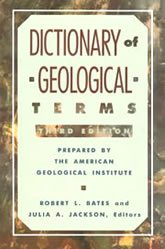Geological Terms Beginning With "F"
For terms beginning with other letters, please click below
|
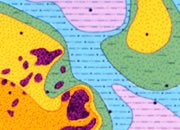
Facies
a) The characteristics of a rock or sediment unit that reflect its environment of deposition and allow it to be distinguished from rock or sediment deposited in an adjacent environment.
b) A mass of rock that can be recognized by its composition, structures or fossil content and mapped on the basis of those characteristics.
Fancy Sapphire
"Fancy sapphire" is a name used for a gem corundum that has a body color other than blue (sapphire) or red (ruby).
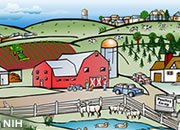
Farm-Out Arrangement
A contractual agreement in which a mineral rights owner or lessee assigns a working interest to another party who will become responsible for specific exploration, development or production activities.
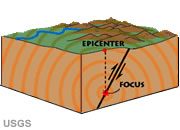
Fault
A fracture or fracture zone in rock along which movement has occurred. When movement occurs the vibrations that are produced are known as an earthquake.
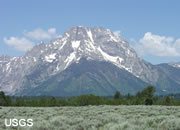
Fault-Block Mountain
A linear mountain that is bounded on both sides by normal faults. The photo is a view of Mount Moran near Jackson Lake Junction, Wyoming, part of the Teton Range.
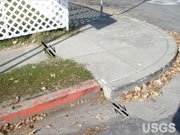
Fault Creep
A very slow movement that occurs on faults in response to continuous tectonic deformation. The deformation might not be accompanied by earthquake activity. Faults that creep usually have fewer earthquakes than faults that move suddenly. The photo shows a curb and sidewalk which were becoming offset due to creep along the Hayward Fault in California. The curb was repaired in 2016.
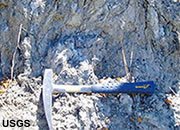
Fault Gouge
Crushed and smeared rock debris that is found between the two walls of a fault produced by crushing action of fault movement. The photo shows serpentinite gouge in the Bartlett Springs Fault.

Fault Trace
The intersection of a fault with Earth's surface, often as seen in the field, on an aerial photo or on a satellite image. A line on a geologic map that represents the intersection of a fault with the Earth's surface. The image is an oblique aerial photo of the Banning Fault in the northern portion of the Coachella Valley of California.
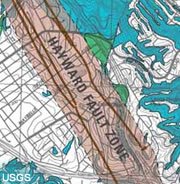
Fault Zone
An area of rock that has numerous fractures of similar trend and dip. Rocks usually do not fail with a clean break, instead they fail through the formation of numerous fractures along a zone of failure. As a result, many named "faults" are actually zones of fractured rock.
The term also has a regulatory use. These "fault zones" are geographic areas where buildings and land use are subject to regulation because they are thought to be exposed to the hazard of a nearby fault. These fault zones are usually drawn on maps and published by a government agency for public viewing.
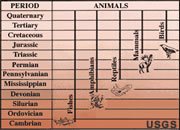
Faunal Succession
A principle of relative dating that is based upon the observed sequence of organisms in the rock record. The relative age of two rock units can frequently be determined by matching the fossils found in those rocks to their positions in the rock record.

Felsic
A term used to describe an igneous rock that has a large percentage of light-colored minerals such as quartz, feldspar, and muscovite. Also used in reference to the magmas from which these rocks crystallize. Felsic rocks are generally rich in silicon and aluminum and contain only small amounts of magnesium and iron. Granite and rhyolite (shown here) are examples of felsic rocks. (See mafic to contrast.)
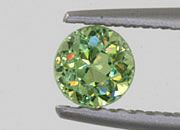
Fire
Colored flashes of light emitted from a gemstone that result from incident light being separated into its component colors as it passes through the stone. Each gem material has a characteristic dispersion. Some have exceptional dispersion and produce a very intense fire. Although many people believe that diamond has the strongest dispersion of all gems, a few gems such as sphalerite, demantoid garnet (shown in the photo), sphene, and zircon have an even greater dispersion.

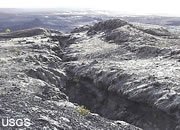
Fissure
An open fracture or crack in Earth's surface that can result from a wide variety of causes that include: earthquake, volcanic activity, desiccation, subsidence, mass wasting, groundwater withdrawal, oil production, faulting, and other movements. Fissures associated with volcanic activity can produce large outpourings of magma. Others can be the initial step of forming an igneous dike. Some fissures are filled with valuable minerals.

Fissure Eruption
A volcanic eruption that produces lava and other products from a fracture in Earth's surface. Fissure eruptions commonly occur where basaltic magmas inflate a subsurface reservoir, producing extension fractures in Earth's surface. Image copyright iStockphoto / GISBA.
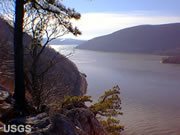
Fjord
A deep, narrow, steep-walled, U-shaped valley that was eroded to a depth below sea level by glaciers and then flooded with sea water after the glacier melted. Shown here is the Hudson River Valley fjord in New York, as seen from Anthony's Nose Overlook.
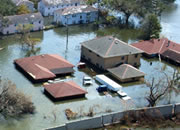
Flood
An overflow of water onto lands that are normally above local water levels. Can be caused by stream discharge exceeding the capacity of the stream channel, storm winds and reduced pressure drawing water from a lake or ocean onto the coastline, dam failure, lake level increase, local drainage problems or other reasons.
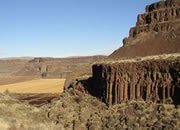
Flood Basalt
A sequence of parallel to subparallel basalt flows that were formed during a geologically brief interval of time and which covered an extensive geographic area. Thought to have formed from simultaneous or successive fissure eruptions. In the photo are layered flood basalts from the Columbia River. Public domain image by William Borg.
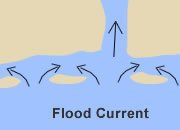
Flood Current
A tidal current that moves towards land as high tide approaches, covering the inter-tidal zone. Flood currents can temporarily reverse the flow of rivers that enter the ocean. They can be very strong at the openings of bays and between barrier islands, where large amounts of water must flow through a narrow opening in a limited amount of time. The arrows in the image show the directions that water would flow as flood currents enter a river and fill lagoons behind barrier islands.
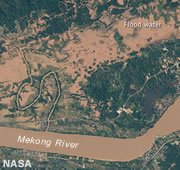
Flood Plain
An area of alluvium-covered, relatively level land along the banks of a stream that is covered with water when the stream leaves its channel during a time of high flow. The astronaut photo shown here, which was taken above the border between Laos and Thailand in August 2015, shows the Mekong River flood plain covered with muddy water.
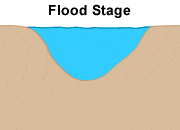
Flood Stage
A water height that is reached when the discharge of a stream exceeds the capacity of the channel.

Flood Tide
A tidal current that generally moves landward and occurs during the part of the tide cycle when sea level is rising. (See neap tide for contrast.)
|
Dictionary of Geological Terms - Only $19.99 All scientific disciplines have an essential vocabulary that students and professionals must understand to learn and communicate effectively. A geology dictionary that is used regularly is one of the most important tools for developing professional competence. A good dictionary should be on the desk of every geologist and within easy reach. This dictionary is compact and inexpensive at only $19.99. More information. |
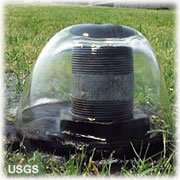
Flowing Well
A well that taps an aquifer that is under enough pressure to force water to the surface. Caused when the aquifer has a recharge area at a higher elevation.
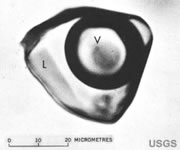
Fluid Inclusion
A small amount of fluid (liquid and/or gas) trapped within a rock and which is thought to represent the fluid from which the rock crystallized. The photo shows a fluid-filled inclusion in quartz that also contains a vapor bubble. The letter "L" indicates the liquid, and the "V" indicates the vapor bubble.
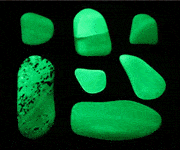
Fluorescence
The ability of a material to temporarily absorb a small amount of light and an instant later release a small amount of light of a different wavelength. This change in wavelength causes a temporary color change of the mineral in the eye of a human observer. The color change of fluorescent materials is most obvious when the materials are illuminated in darkness by ultraviolet light (which is not visible to humans) and the materials release visible light. A more detailed explanation of fluorescence can be found in our article on fluorescent minerals. The photo shows specimens of opal from Virgin Valley, Nevada in normal light and under shortwave ultraviolet light.
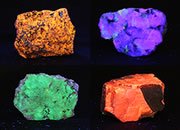
Fluorescent Minerals
Fluorescent minerals are minerals that have the ability to be stimulated by ultraviolet light and release a fluorescent glow. About 15% of minerals will fluoresce in wavelengths that are visible by people. Some require illumination by longwave ultraviolet light, some require illumination by shortwave ultraviolet light. The Geology.com Store has small collections of fluorescent minerals available for sale.
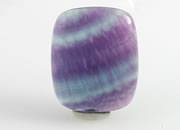
Fluorite
Fluorite is an important industrial mineral composed of calcium and fluorine (CaF2). It is used in a wide variety of chemical, metallurgical and ceramic processes. Specimens with exceptional diaphaneity and color are cut into gems or used to make ornamental objects.
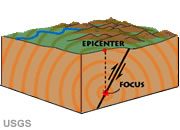
Focus
A point beneath Earth's surface where the vibrations of an earthquake are thought to have originated. Also known as a hypocenter.
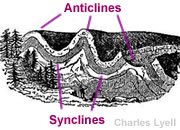
Fold
A bend or flexure in a rock unit or series of rock units that has been caused by crustal movements. Folds frequently form near convergent plate boundaries where the rock units are under compression and the folds accommodate crustal shortening. Sketch of folds in outcrop by Sir Charles Lyell.
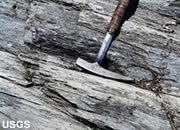
Foliation
The planar or layered characteristics of metamorphic rocks that are evidence of the pressures and/or temperatures to which the rock was exposed. These can be structural such as cleavage, textural such as mineral grain flattening or elongation, or compositional such as mineral segregation banding. The photo shows a phyllite from Frederick County, Maryland.

Fool's Gold
A name often used for pyrite because it is sometimes mistaken for gold by inexperienced people. Chalcopyrite and tiny flakes of biotite mica are also often mistaken for gold. Anyone who plans to go panning for gold should learn the easy methods for identifying gold to avoid embarassment and wasting their time.
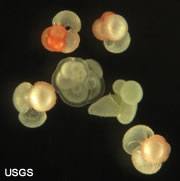
Foraminifer
A group of tiny organisms, protozoans that belong to the subclass Sarcodina, order Foraminifera. They produce a very thin calcium carbonate test (shell) with one to many chambers. They are usually marine, less than one millimeter in size, and their tests can make up a significant portion of the carbonate sediment in some areas. The image shows foraminifera collected from a sediment-trap moored in the northern Gulf of America by USGS workers.
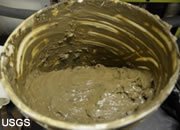
Foraminiferal Ooze
A calcareous sea-floor sediment composed primarily of foraminifer tests. The image shows a lab dish containing calcareous ooze dredged from the floor of the Arctic Ocean.
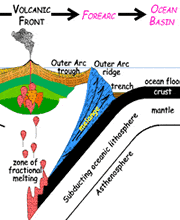
Forearc
The tectonic region between a subduction zone and its associated volcanic arc. This is the area underlain by the subducting plate. Image by USGS.

Foreign Operations
Activities located outside of the United States, its offshore territorial waters, commonwealth territories, and protectorates.
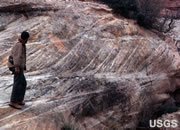
Foreset Beds
The distinctly dipping sediment layers deposited on the front of a prograding delta or on the lee side of a sand dune. The photo shows foreset beds in eolian deposits of the Cedar Mesa Sandstone Member of the Cutler Formation in southeast Utah.
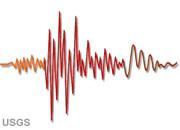
Foreshocks
Small earthquakes that precede the largest earthquake of an earthquake sequence. Some researchers believe that they may be of value for predicting a major earthquake, but not all large earthquakes are accompanied by foreshocks.
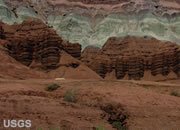
Formation
A laterally continuous rock unit with a distinctive set of characteristics that make it possible to recognize and map from one outcrop or well to another. The basic rock unit of stratigraphy. The brown cliffs in the photo are an outcrop of the Moenkopi Formation at Capitol Reef National Park. The Moenkopi is a Triassic-age rock unit that can be traced throughout parts of Arizona, California, Colorado, New Mexico, Nevada, and Utah.
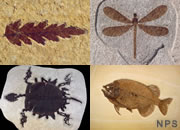
Fossil
Remains, imprints or traces of an ancient organism that have been preserved in the rock record. Bones, shells, casts, tracks and excrement can all become fossils.
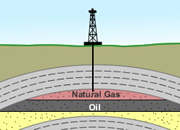
Fossil fuel
A carbon-rich rock material or fluid, of organic origin, that can be produced and burned as a fuel. Coal, oil and natural gas are examples of fossil fuels.

Fossil Succession
A principle of relative dating that is based upon the observed sequence of organisms in the rock record. The relative age of two rock units can frequently be determined by matching the fossils found in those rocks to their positions in the rock record.
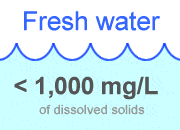
Fresh Water or Freshwater ?
These words refer to water that is not salt water. To be called "fresh water," the amount of dissolved solids in 1 liter of water must be less than 1,000 milligrams.
When written as 2 words, the word "fresh" is an adjective used to describe the noun "water." For example, "These fish live in fresh water."
When written as a single word, "freshwater" is an adjective used to describe a noun that follows it, as in "freshwater fish."
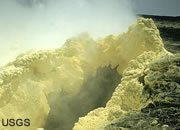
Fumarole
A vent that emits hot gases to the atmosphere, usually associated with past or current magmatic activity below. Some are active for a short amount of time before stopping permanently, some are intermittent and some are active for centuries. Common gases include: carbon dioxide, sulfur dioxide, hydrogen chloride, hydrogen sulfide, all of which can be deadly. The photo shows a fumarole on the flank of Kilauea Volcano in Hawaii with yellow crystals of sulfur that have been deposited by sublimation from the escaping gas.
|
| More General Geology |
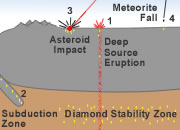 |
Diamonds from Coal? |
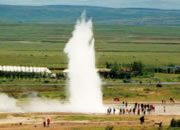 |
What is a Geyser? |
 |
What is the San Andreas Fault? |
 |
Igneous and Volcanic Features |
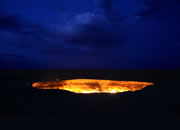 |
The Doorway to Hell |
 |
Topo Maps |
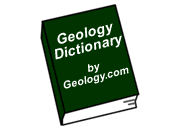 |
Geology Dictionary |
 |
Gifts That Rock |

Find Other Topics on Geology.com:

|

| ||

|

| ||

|

| ||

|

|


